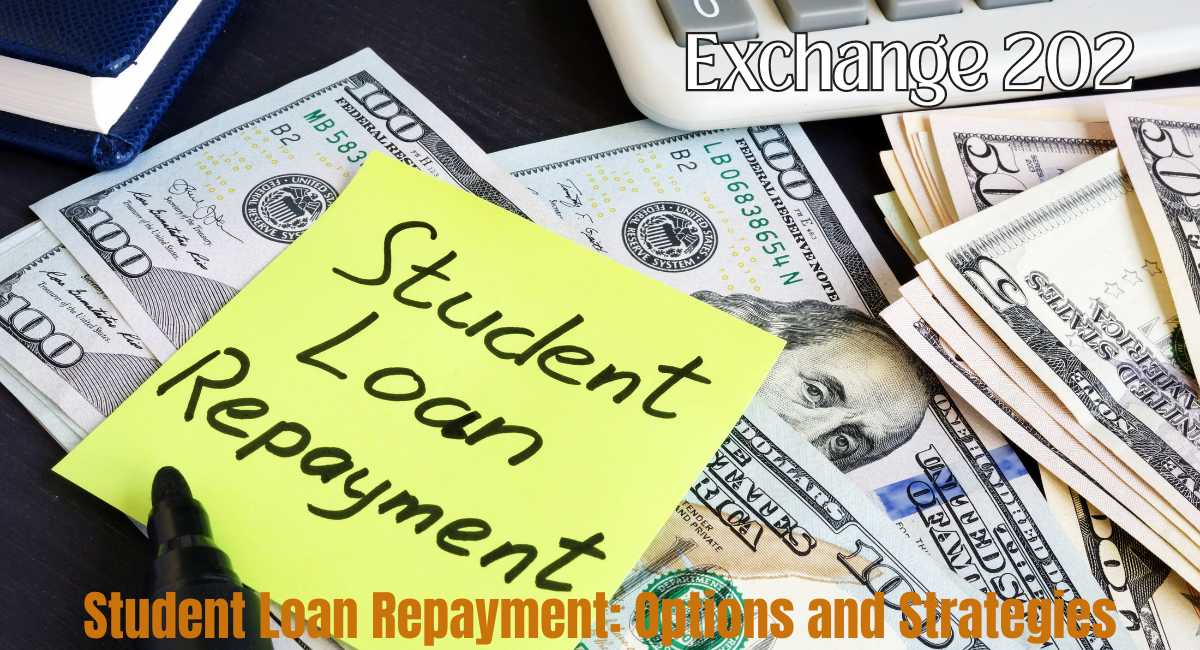Introduction:
Higher education is an investment in your future, but it’s expensive. Student loans make college affordable, but managing them wisely is crucial to your finances. This article discusses student loan repayment alternatives and ideas to help you manage this financial obligation.
Learning About Student Loans
Understanding student loan kinds and terms is essential before considering repayment choices. Federal and private student loans are the primary types:
Federal loans:
- Students in both the undergraduate and graduate levels are eligible for direct unsubsidized loans regardless of their family income. During the period of schooling and deferral, interest is accrued.
- Financially disadvantaged undergraduates can receive direct subsidized loans. The government covers school and deferred interest.
Direct PLUS Loans: Eligible applicants include graduate students as well as parents of dependent undergraduates. Compared to other federal loans, these loans exhibit elevated interest rates and require credit checks.
Private loans:
Banks, credit unions, and private lenders give loans. Variable interest rates and credit checks or co-signers are typical. Federal loans provide more borrower protection than personal loans.
Federal Student Loan Repayment Options
Federal student loans offer flexible repayment alternatives for varied financial situations. Here are some popular federal loan repayment plans:
Repayment Plan: Standard
- Low interest paid overall.
- We have fixed monthly payments for 10 years.
- For people who can afford larger monthly payments.
Longer Repayment plan:
- Increases payback to 25 years.
- Fixed or progressive payments.
- Reduces monthly payments but raises interest.
- Graduated Repayment:
- Starting low, payments rise every two years.
- Suitable for debtors expecting income growth.
- Repayment plans based on income
Based on family size and income.
The main IDR plans are income-Based Repayment (IBR), PAYE, REPAYE, and ICR.
- Payments can be 10-20% of discretionary income.
- Loan cancellation after 20-25 years of qualified payments.
- PSLF: Public service loan forgiveness
- After 120 qualifying payments (10 years) with qualifying employment, a government or nonprofit usually forgives the loan balance.
Repayment based on income:
- Monthly payments are based on income, not a percentage.
- Available for FFEL loans.
- Selecting a Repayment Plan
Financial situation, career ambitions, and personal preferences determine repayment plan selection. Consider these variables while choosing a repayment plan:
If your income is low or varies, IDR plans may help. You get more freedom and cheaper monthly payments dependent on your earnings.
Think about your long-term financial goals. Standard or extended plans may help you pay debts quickly and save interest. If PSLF loan forgiveness is your objective, choose a plan.
Job Choice: PSLF offers generous benefits to public and nonprofit workers. Verify your program-eligible employment.
Family Size: IDR plans calculate payments based on family size, which benefits borrowers with dependents.
Interest Rates: Individual loan programs may pay different amounts of interest over time. Read the terms carefully.
Student Loan Repayment Strategies
For effective student loan management and repayment, consider the following measures in addition to picking the correct repayment plan:
Budget: Include loan payments in your monthly budget. This will improve your loan repayment budget and financial management.
Pay More Than the Minimum: Pay more on your loans. Even little extra payments can lower interest and shorten payback.
Automating loan payments might help you avoid late fines and missed deadlines. Several lenders offer autopay savings.
If you have multiple loans with different interest rates, consolidate or refinance them to lower your interest rate and simplify your payments.
Windfalls: Use tax refunds and incentives to pay off student loans faster.
Consider Loan Forgiveness: Meet PSLF and other loan forgiveness program requirements and submit an application.
Discover Employer Benefits: Some companies help employees repay student loans. Ask your employer if this is accessible.
Seek Professional Advice: Ask a financial advisor or student loan counselor for advice on the best options for your situation.
Dealing with Private Student Loans
Federal student loans have more repayment alternatives and borrower protections than private loans. Consider these personal loan strategies:
Talk to Your Lender: Talk to your lender about repayment. Some private lenders may grant financial hardship forbearance or postponement.
Refinance: Consider refinancing private loans for reduced rates. Be mindful that refinancing may reduce federal loan advantages.
Repayment Plan: Make a budget-friendly repayment plan. Avoiding default requires continuous and on-time payments on private loans.
If you have many private loans, pay off the ones with the highest interest rates first to save interest expenditures.
Conclusion:
Student loan management is difficult yet manageable. Understanding loan kinds, repayment alternatives, and efficient techniques will help you repay your loans and reach your financial goals. Remember that careful debt management is essential to financial security.
